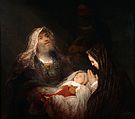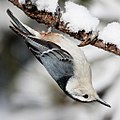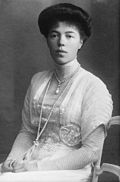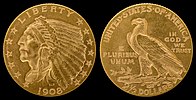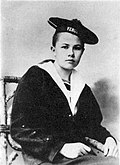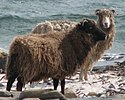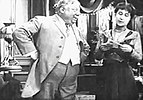Wikipedia:Today's featured article/February 2018
| << | Today's featured articles for February 2018 | >> | ||||
|---|---|---|---|---|---|---|
| Su | Mo | Tu | We | Th | Fr | Sa |
| 1 | 2 | 3 | ||||
| 4 | 5 | 6 | 7 | 8 | 9 | 10 |
| 11 | 12 | 13 | 14 | 15 | 16 | 17 |
| 18 | 19 | 20 | 21 | 22 | 23 | 24 |
| 25 | 26 | 27 | 28 | |||
February 1
Eight 250t-class torpedo boats were built by Stabilimento Tecnico Triestino for the Austro-Hungarian Navy between 1913 and 1916 for service in World War I. They were among 27 high-seas torpedo boats that undertook anti-submarine operations in the Adriatic Sea, shore bombardment missions along its Italian coastline, and convoy, and escort and minesweeping tasks. Under the terms of the post-war Treaty of Saint-Germain-en-Laye, the boats were surrendered to Romania, Portugal, Greece, and the newly created Kingdom of Serbs, Croats and Slovenes (later Yugoslavia). By 1940, 13 torpedo boats had been lost or scrapped. During World War II, the five remaining Greek boats were sunk by Axis aircraft during the German-led invasion of Greece in April 1941. The two Romanian boats that survived the war performed escort tasks in the Black Sea before being taken over by the Soviet Navy for service in the Black Sea Fleet. The six surviving Yugoslav boats were captured by the Italians during the Axis invasion of Yugoslavia in April 1941, and were operated by the Italian navy in coastal and second-line escort roles. The last of the Yugoslav boats was withdrawn from service in 1962. (Full article...)
February 2
Mit Fried und Freud ich fahr dahin (With peace and joy I depart), BWV 125, is a church cantata by Johann Sebastian Bach, composed in Leipzig in 1725 for the Candlemas feast on 2 February. The cantata is based on Martin Luther's 1524 hymn of the same name. The gospel for the feast day, the presentation of Jesus at the Temple, includes Simeon's canticle (painting pictured), which Luther paraphrased in his hymn. For Bach's chorale cantata cycle, an unknown librettist retained the first and the last of Luther's four stanzas, paraphrasing the second stanza for an aria, and including its original text line by line in a recitative. Bach framed four solo movements with choral music, a chorale fantasia and a closing chorale. He scored the work for three vocal soloists, a four-part choir, horn, flauto traverso, oboes, strings and basso continuo. In the third movement, Bach uses recitative for the librettist's text, and arioso for the interspersed hymn quotations, accompanying both with a joyful motif. The opening chorus has been compared to the opening movement of Bach's later St Matthew Passion. (Full article...)
February 3
Plunketts Creek is a 6.2-mile-long (10.0 km) tributary of Loyalsock Creek in Lycoming and Sullivan counties in the U.S. state of Pennsylvania. Its watershed drains 23.6 square miles (61 km2) in the Chesapeake Bay basin by way of the West Branch Susquehanna and Susquehanna rivers. The creek is named for Colonel William Plunkett, who led a Pennsylvania expedition in the Pennamite–Yankee War to forcibly remove settlers arriving from Connecticut, who were claiming lands that were also claimed by Pennsylvania. For his services, Plunkett was granted land that included the creek's mouth. The creek flows southwest and then south through the dissected Allegheny Plateau, through rock from the Mississippian sub-period and Devonian period. Much of the Plunketts Creek valley is composed of glacial deposits, chiefly alluvium. A potentially large source of natural gas, the Marcellus Shale, lies 1.5 to 2.0 miles (2.4 to 3.2 km) below the surface. Although the watershed was clear-cut and home to a tannery, sawmills, and a coal mine in the nineteenth century, today it is heavily wooded with abundant potable water. (Full article...)
February 4
The 1998 NFC Championship Game was a National Football League game played on January 17, 1999, in the US state of Minnesota to determine the National Football Conference (NFC) champion for the 1998 NFL season. The visiting Atlanta Falcons defeated the heavily favored Minnesota Vikings 30–27 in sudden death overtime to win their first conference championship and advance to the franchise's first Super Bowl appearance. The Vikings had gone undefeated in their home stadium, the Hubert H. Humphrey Metrodome (pictured), during the regular season, and their placekicker, Gary Anderson, had become the first kicker in NFL history to convert every field goal and extra point attempt in a season. At a critical moment late in the game, Anderson missed a field goal that would have given the Vikings a nearly insurmountable 10-point lead. Instead, the Falcons scored a touchdown to tie the game on their ensuing drive, and in overtime they won by a field goal. The Vikings became the first team with an NFL regular season record of 15–1 that did not go on to win the Super Bowl. (Full article...)
February 5
The white-breasted nuthatch (Sitta carolinensis) is a small songbird that breeds in old-growth woodland across much of temperate North America. It is a stocky nuthatch with a large head, short tail, powerful bill, and strong feet. The upperparts are pale blue-gray, and the face and underparts are white. It has a black cap and a chestnut lower belly. The nine subspecies differ mainly in the color of the body plumage. Like other nuthatches, the white-breasted nuthatch forages for insects on trunks and branches and is able to move head-first down trees. Seeds form a substantial part of its winter diet, as do acorns and hickory nuts that were stored by the bird in the fall. The nest is in a hole in a tree, and a breeding pair may smear insects around the entrance as a deterrent to squirrels. Adults and their young may be killed by hawks, owls, and snakes, and forest clearance may lead to local habitat loss, but this is a common species with no major conservation concerns over most of its range. (Full article...)
February 6
Grand Duchess Olga Alexandrovna of Russia (1882–1960) was the youngest child of Emperor Alexander III of Russia and younger sister of Emperor Nicholas II. Her father died when she was 12, and her brother Nicholas became emperor. At 19 she married Duke Peter Alexandrovich of Oldenburg; their marriage was unconsummated and was annulled by the Emperor in October 1916. The following month Olga married cavalry officer Nikolai Kulikovsky, with whom she had fallen in love several years before. During the First World War, the Grand Duchess served as an army nurse at the front and was awarded a medal for personal gallantry. At the downfall of the Romanovs in the Russian Revolution of 1917, she fled to the Crimea with her husband and children, where they lived under the threat of assassination. After her brother and his family were shot by revolutionaries, she and her family escaped to Denmark in February 1920. In exile, she was often sought out by Romanov impostors who claimed to be her dead relatives. In 1948, feeling threatened by Joseph Stalin's regime, she emigrated with her immediate family to Ontario, Canada. (Full article...)
February 7
In the Guadalcanal Campaign of the Second World War, the Allies reversed the gains of Imperial Japan in the southwest Pacific. U.S. forces had inflicted heavy losses on the Imperial Japanese Navy at the Battle of Midway in June 1942, but Japan had remained on the offensive, pushing into the Solomon Islands from Rabaul and threatening supply lines to Australia and New Zealand. In August 1942, U.S. Marines landed on Guadalcanal in the southern Solomon Islands. The Japanese had occupied the islands since May, and were building an airfield (later named Henderson Field). The Allies overwhelmed the surprised Japanese defenders and captured the airfield. The Japanese attempted to retake it but were defeated in the Naval Battle of Guadalcanal in early November. They abandoned their campaign in December, and evacuated their remaining forces on 7 February 1943. The Allied victories on Guadalcanal, and in New Guinea, marked the transition from defensive operations to a series of offensives that culminated in the Japanese surrender in 1945. (Full article...)
Part of the Guadalcanal Campaign featured topic.
February 8
In Nevada, U.S. Route 50 runs from the resort communities of Lake Tahoe eastward to the Utah border near Great Basin National Park. Route 50 is a transcontinental highway that stretches from West Sacramento, California, to Ocean City, Maryland, on the east coast. The Nevada portion crosses several large desert valleys separated by alpine forestland, across the Basin and Range Province of the Great Basin. It passes through the state capital in Carson City as well as Fort Churchill State Historic Park, ghost towns and petroglyph sites. The route was constructed along a historic corridor, first used for the Pony Express and Central Overland Route and later for most of State Route 2 (before the U.S. Highway System) and the Lincoln Highway. U.S. Route 50 in Nevada was named "The Loneliest Road in America" by Life magazine in 1986; they were referring to large desolate areas with few or no signs of civilization along the route, but Nevada officials seized on the name as a marketing slogan. (Full article...)
February 9
Cragside is a Victorian country house near Rothbury in Northumberland, England. It was the home of William Armstrong, 1st Baron Armstrong, founder of the Armstrong Whitworth armaments firm and inventor of the hydraulic crane and the Armstrong gun. Cragside was the first house in the world to be lit using hydroelectric power. The entire estate, designed by Richard Norman Shaw, was technologically advanced, with a hydraulic lift, a hydroelectric rotisserie, and early versions of a dishwasher and dumb waiter. Armstrong was raised to the peerage in 1887, taking the title Baron Armstrong of Cragside. He was the first engineer ever to join the House of Lords. He filled Cragside with a significant art collection, and it became an integral part of his commercial operations, entertaining guests including the Shah of Persia and the King of Siam. Following Armstrong's death in 1900, his heirs struggled to maintain the house and estate. The National Trust acquired the estate in 1977 and opened it to the public in 1979. (Full article...)
February 10
Tropical Depression Ten was a precursor of Hurricane Katrina during the record-breaking 2005 Atlantic hurricane season. It formed on August 13 from a tropical wave off the west coast of Africa, but the depression faced strong wind shear and remained weak. By August 14, it no longer met the criteria for a tropical cyclone, and the National Hurricane Center issued their final advisory on it. Moving westward, the storm produced occasional bursts of atmospheric convection. By August 18, only a remnant mid-level circulation persisted. This merged with a second tropical wave on August 23 to form Tropical Depression Twelve, which grew into Katrina, the third most intense tropical cyclone ever to make landfall in the United States. Katrina was the costliest US disaster until Hurricane Harvey in 2017, and one of the deadliest Atlantic hurricanes, causing severe destruction along the Gulf Coast from central Florida to Texas, much of it due to storm surge and levee failure. At least 1,245 people died in the hurricane and subsequent floods. (Full article...)
February 11
A cricket match on 11 and 12 February 1851, played by teams from Van Diemen's Land (now Tasmania) and Port Phillip District (now Victoria), was the first between two Australian colonies, recognised in later years as the initial first-class cricket match in Australia. It took place at the Launceston Racecourse (pictured in 2009). The match was one of the celebratory events marking the separation of the Port Phillip District from New South Wales in 1851 as the colony of Victoria. The team representing Port Phillip was drawn from the Melbourne Cricket Club; the Van Diemen's Land team consisted of players from Launceston and Hobart. The visiting Port Phillip team was expected to have an advantage but had difficulties with the batting conditions and the opposition's unusually slow bowling. Batting first, Port Phillip scored 82; Van Diemen's Land replied with 104, assisted by a large number of extras. Batting again, the Victorian team scored 57; the Tasmanian team needed 36 to win, which they accomplished on the second day to record a three-wicket victory. Following this match, intercolonial cricket became increasingly widespread. (Full article...)
February 12
The Indian Head gold pieces were two coin series struck by the United States Mint: a two-and-a-half dollar piece, or quarter eagle (1908–1915, 1925–1929), and a five-dollar coin, or half eagle (1908–1916, 1929). The only US coins with recessed (engraved) designs ever to enter circulation, they were the last of a long series of coins in those denominations. President Theodore Roosevelt vigorously advocated new coin designs, and had the Mint engage his friend, the sculptor Augustus Saint-Gaudens, to design coins that could be changed without congressional authorization. The sculptor completed an eagle ($10 piece) and double eagle before his death in 1907. Roosevelt convinced Mint Director Frank Leach to reproduce the eagle's design on both of the smaller coins, but recessed below the background. The job fell to Boston sculptor Bela Lyon Pratt, and after some difficulty, the Mint was able to strike the coins, though Pratt was unhappy with modifications made by the Mint's engravers. The quarter eagle enjoyed popularity as a Christmas present, but neither coin circulated much. (Full article...)
February 13

Stretford is a town in Trafford, Greater Manchester, England. Lying on flat ground between the River Mersey and the Manchester Ship Canal, it is 3.8 miles (6.1 km) to the southwest of Manchester city centre. Historically in Lancashire, Stretford was an agricultural village during much of the 19th century known locally as Porkhampton, in reference to the large number of pigs produced for the nearby Manchester market. The arrival of the Manchester Ship Canal in 1894, and the subsequent development of the Trafford Park industrial estate in the north of the town, accelerated the industrialisation that had begun in the late 19th century; by 2001 less than one per cent of Stretford's population was employed in agriculture. Stretford has been the home of Manchester United Football Club since 1910, and of Lancashire County Cricket Club since 1864. Residents have included the suffragette Emmeline Pankhurst, the painter L. S. Lowry, Morrissey, Joy Division frontman Ian Curtis, Jay Kay of Jamiroquai, and Manchester's first multi-millionaire, the industrialist and philanthropist John Rylands. (Full article...)
Part of the Towns in Trafford featured topic.
February 14
Paxillus involutus, the common roll-rim, is a fungus widely distributed across the Northern Hemisphere; it has also been unintentionally introduced to Australia, New Zealand, and South America. The brownish fruit body grows up to 6 cm (2.4 in) high. It has a funnel-shaped cap up to 12 cm (5 in) wide with a distinctive in-rolled rim and decurrent gills close to the stalk. Genetic testing suggests that the fungus may be a species complex rather than a single species. A common mushroom of deciduous and coniferous woods and grassy areas in late summer and autumn, P. involutus is symbiotic with the roots of many tree species, reducing the trees' intake of heavy metals and increasing their resistance to pathogens. Previously considered edible and eaten widely in Eastern and Central Europe, the mushroom has been found to be dangerously poisonous; in 1944, it killed the German mycologist Julius Schäffer. It can trigger the immune system to attack red blood cells with potentially fatal complications, including acute renal and respiratory failure. (Full article...)
February 15
Fantastic (1952–1980) was an American digest-size fantasy and science fiction magazine, founded by Ziff Davis as a fantasy companion to Amazing Stories. Within a few years sales fell, and Howard Browne, the first editor, was forced to switch the focus to science fiction rather than fantasy. At the end of the 1950s Cele Goldsmith took over from Paul W. Fairman as editor of both Fantastic and Amazing, bringing in many new writers and making the magazines, in the words of one science fiction historian, the "best-looking and brightest" in the field. She helped to nurture the early careers of writers such as Roger Zelazny and Ursula K. Le Guin, but was unable to increase circulation. In 1965 the magazines were sold to Sol Cohen, who hired Joseph Wrzos as editor and switched to a reprint-only policy. This was financially successful, but brought Cohen into conflict with the newly formed Science Fiction Writers of America. After Ted White became editor in 1968, the reprints were phased out. White worked hard to make the magazine successful; his budget for fiction was low, but he was occasionally able to find good stories from well-known writers. (Full article...)
February 16
"Space Seed" is an episode of the American science fiction television series Star Trek. First broadcast by NBC on February 16, 1967, it was written by Gene L. Coon and Carey Wilber and directed by Marc Daniels. Set in the 23rd century, the series follows the adventures of Captain James T. Kirk (William Shatner) and his crew aboard the starship USS Enterprise. In the episode, they encounter a sleeper ship holding selectively bred superhumans from Earth's past. Khan Noonien Singh (Ricardo Montalbán) attempts to take control of Enterprise with the help of Marla McGivers (Madlyn Rhue). Montalbán, the casting director's first choice, described the role as "wonderful". The script changed many times during preproduction, in part to reduce costs, but the special sets and shots using starship miniatures took the show over budget. Although the episode did not win its time slot on its first run, it has been named one of the best of the series by Cinefantastique, IGN, and other publications. The 1982 film Star Trek II: The Wrath of Khan serves as a sequel to "Space Seed", and plot elements from both were used in the 2013 film Star Trek Into Darkness. (Full article...)
February 17
Isabelle Eberhardt (17 February 1877 – 21 October 1904) was a Swiss explorer and writer. As a teenager, she published short stories under a male pseudonym. She became interested in North Africa, and was considered a proficient writer on the region despite learning about it only through correspondence. Eberhardt moved to Algeria in 1897, where she converted to Islam, dressed as an Arabic man and adopted a male name. Her unorthodox behaviour made her an outcast to European settlers and the French administration. Her acceptance by the Qadiriyya, an Islamic order, convinced the French that she was a spy or an agitator. In 1901 she survived an assassination attempt and was ordered to leave Algeria, but was allowed to return the following year after marrying her long-time partner, an Algerian soldier. In 1904, aged 27, she was killed by a flash flood in Aïn Sefra. Her manuscripts were collected and published posthumously, receiving critical acclaim. Streets were named after her in Béchar and Algiers. (Full article...)
February 18
Lazarus Aaronson (18 February 1895 – 9 December 1966) was a British poet and a lecturer in economics. As a young man, he belonged to a group of Jewish friends who are today known as the Whitechapel Boys, many of whom later achieved fame as writers and artists. His diction and verbal energy have been compared to those of his more renowned and innovative Whitechapel friend, Isaac Rosenberg. Reviewers have traced influences in Aaronson's poetry from the English poet John Keats and from Hebrew poets such as Shaul Tchernichovsky and Zalman Shneur. Aaronson lived most of his life in London and spent much of his working life as a lecturer in economics at the City of London College. In his twenties, he converted to Christianity; a large part of his poetry focused on his conversion and spiritual identity as a Jew and an Englishman. He published three collections of poetry: Christ in the Synagogue (1930), Poems (1933), and The Homeward Journey and Other Poems (1946). Although he did not achieve widespread recognition, Aaronson gained a cult following of dedicated readers. (Full article...)
February 19
Dungeon Siege is an action role-playing game developed by Gas Powered Games and published by Microsoft for Windows (2002) and by Destineer for MacOS (2003). Set in the pseudo-medieval kingdom of Ehb, the high fantasy game follows a young farmer and his companions as they journey to defeat an invading force. Instead of manually controlling characters, the player sets their overall tactics, weapons and magic usage. Chris Taylor and Jacob McMahon aimed for a role-playing game stripped of the typical genre elements they found slow or frustrating, including all loading screens, to keep the player focused on the action. Development took over four years, often with 12- to 14-hour workdays. The game is listed by review aggregator Metacritic as the third-highest rated computer role-playing game of 2002. Critics praised the graphics and seamless world, as well as the fun and accessible gameplay, but were dismissive of the plot. The game sold over 1.7 million copies. An expansion pack, Dungeon Siege: Legends of Aranna, was released in 2003, followed by Dungeon Siege II (2005), Dungeon Siege III (2011), and other titles. (Full article...)
February 20
Maxinquaye is the debut album by English rapper and producer Tricky (pictured), released on 20 February 1995. By the time he recorded the album, Tricky had grown frustrated with his limited role in the group Massive Attack and had discovered vocalist Martina Topley-Bird, who he felt would offer another dimension to his lyrics. He signed a solo contract with 4th & B'way Records in 1993 and recorded Maxinquaye the following year primarily at his home studio in London with Topley-Bird as the predominant vocalist. The record's groove-oriented and low-tempo sound incorporates elements from hip hop, soul, rock, ambient techno, reggae, and experimental music. The songs explore themes of cultural decline, dysfunctional sexual relationships, fear of intimacy, and recreational drug use. In writing them, Tricky drew on his experiences in the British drug culture and the influence of his late mother Maxine Quaye, after whom the album is titled. The album has sold 500,000 copies worldwide and has ranked frequently on greatest-album lists, being viewed as a significant influence on electronica, underground, and British hip hop. (Full article...)
February 21
The North Ronaldsay is a breed of domestic sheep from the northernmost island of Orkney, off the north coast of Scotland. It belongs to the Northern European short-tailed sheep group of breeds, and has evolved without much cross-breeding with modern breeds. It is a smaller sheep than most, with the rams (males) horned and ewes (females) mostly hornless. It was formerly kept primarily for wool, but now the two largest flocks are feral, one on North Ronaldsay and another on the Orkney island of Linga Holm. The Rare Breeds Survival Trust lists the breed as "vulnerable", with fewer than 600 registered breeding females in the United Kingdom. The sheep on North Ronaldsay are confined to the shoreline by a 1.8 m tall (6 ft) dry-stone wall, which completely encircles the island. The wall was built originally to protect the shoreline and keep the sheep inside it, but when seaweed farming on the shore became uneconomical, the sheep were banished outside the wall to protect the fields and crofts inside. Because of their restricted environment, the sheep evolved to subsist almost entirely on seaweed. (Full article...)
February 22
Æthelflæd, Lady of the Mercians (c. 870 – 918), ruled Mercia in the English Midlands from 911 until her death. The oldest daughter of King Alfred the Great of Wessex, she married Æthelred, Lord of the Mercians, who ruled western Mercia when the eastern part was occupied by the Vikings. After her husband's death, she ruled Mercia and played a leading role in recovering southern England from the Vikings in cooperation with her brother, King Edward the Elder. She fortified many towns, sent an army to capture Derby, and secured the surrender of Leicester without a fight. The Viking leaders of York offered her their loyalty, but she died before she could take up the offer. Her daughter Ælfwynn briefly ruled Mercia, but was seized by Edward, who took her into Wessex and brought Mercia under his direct rule. Historians disagree whether Mercia was an independent kingdom under Æthelred and Æthelflæd, but they agree that Æthelflæd played an important part in ending Viking rule in England. As a rare English warrior queen, and a successful one, she has captivated Medieval and modern writers. (Full article...)
February 23
A Cure for Pokeritis is an American short silent film starring John Bunny and Flora Finch (pictured), released on February 23, 1912. A domestic comedy, it depicts a woman who stops her husband's gambling habit by having her cousin stage a fake police raid on his weekly poker game. It was one of many shorts produced by Vitagraph Studios, whose popularity made Bunny and Finch early film stars. Although its style of humor is dated, it is a historically important representative of its period and genre. The film was an early example of efforts to move beyond the conventions of stage plays: during the police raid, action took place in both the foreground and the background, with the actors moving between them. This cinematography technique improved the realism and pacing of the scene. A Cure for Pokeritis may be the first depiction of poker in film. Like Cassius Marcellus Coolidge's Dogs Playing Poker paintings, it reflects the early 20th-century perception of the game as a male-dominated social vice. (Full article...)
February 24
Pyxis is a small and faint constellation in the southern sky. The name comes from Pyxis Nautica, Latin for a mariner's compass (as opposed to a draftsman's compass, represented by the constellation Circinus). Introduced by Nicolas Louis de Lacaille in the 18th century, Pyxis is counted among the 88 modern constellations. In the 19th century, astronomer John Herschel suggested renaming Pyxis to Malus, the mast, since it appears near the old constellation of the ship Argo Navis, but the suggestion was not followed. Pyxis is completely visible from latitudes south of 53 degrees north, with its best evening-sky visibility in February and March. The plane of the Milky Way passes through it. Its three brightest stars—Alpha, Beta and Gamma Pyxidis—are in a rough line; the brightest of these is Alpha (magnitude 3.68), a blue-white star around 22,000 times as luminous as the Sun. Near Alpha is T Pyxidis, a recurrent nova that has flared up to magnitude 7 every few decades. Three star systems have planets, all discovered by Doppler spectroscopy. (Full article...)
February 25
USS West Bridge (ID-2888) was a cargo ship during World War I, one of the steel-hulled West ships built for the U.S. Shipping Board on the West Coast. Launched in April 1918, the ship joined a convoy of cargo ships headed to France in August. After the convoy was attacked by two German submarines and West Bridge was torpedoed, a salvage crew from the American destroyer Smith and four tugs dispatched from France successfully brought the ship into port. After seven months of repairs, West Bridge resumed Navy service until December 1919. The ship was laid up for nearly seven years from 1922 to 1929, when she was sold to an intercoastal cargo service under the name SS Barbara Cates. By 1938, the ship had been renamed Pan Gulf for service with a subsidiary of the Waterman Steamship Company. During World War II, Pan Gulf made nine round trips across the North Atlantic without incident in convoys. In May 1945, the ship was transferred to the Soviet Union under Lend-Lease. Renamed SS Lermontov, the ship continued in civilian service for the Soviets until 1966. (Full article...)
February 26
Stegoceras, a pachycephalosaurid (dome-headed) dinosaur, lived in what is now North America during the Late Cretaceous period, about 77.5 to 74 million years ago. (This genus is distinct from Stegosaurus, which lived more than 70 million years earlier.) Small and bipedal, Stegoceras was about 2 to 2.5 metres (6.6 to 8.2 ft) long and weighed around 10 to 40 kilograms (22 to 88 lb). It had a rigid vertebral column and a stiffened tail. The pelvic region was broad, perhaps due to an extended gut. The skull was roughly triangular with a short snout, topped by a thick, broad, and relatively smooth dome. The skull jutted out in the back over the occiput, and had a thick ridge over the eyes. The teeth were small and serrated. The skull is thought to have been flat in juvenile animals, growing into a dome with age. The dome may have been used for combat, display, or recognition. Specimens have been found in the Dinosaur Park and Oldman formations in Alberta, and the Fruitland and Kirtland formations in the US. (Full article...)
February 27
Olivia Manning (1908–1980) was a British novelist, poet, writer and reviewer. Her fiction and non-fiction, frequently detailing journeys and personal odysseys, were principally set in England, Ireland, Europe and the Middle East. Her first serious novel, The Wind Changes, was published in 1937. She lived in Bucharest, Romania, and in Greece, Egypt and Palestine, as Nazi Germany overran Eastern Europe. Her experiences helped form the six novels making up The Balkan Trilogy and The Levant Trilogy, known collectively as Fortunes of War. The overall quality of her output was considered uneven by critics, but this series, published between 1960 and 1980, was described by Anthony Burgess as "the finest fictional record of the war produced by a British writer". Manning returned to London after the war, writing poetry, short stories, novels, non-fiction, reviews, and drama for the British Broadcasting Corporation. As she had feared, real fame only came after her death, when an adaptation of Fortunes of War was televised in 1987. (Full article...)
February 28
Flight Unlimited III is a 1999 flight simulator video game developed by Looking Glass Studios and published by Electronic Arts. It allows players to pilot reproductions of real-world commercial and civilian aircraft in and around Seattle in the US state of Washington. Players may fly freely or engage in challenges such as thwarting a theft or locating Bigfoot. The development team built on the general aviation gameplay of Flight Unlimited II, with more detailed physics and terrain, more planes and a real-time weather system. Lead designer Peter James described Flight Unlimited III's development as a struggle, due to a lack of interest from Electronic Arts and from Looking Glass's management. Directly competing with Microsoft Flight Simulator 2000 and Fly!, the game became one of Looking Glass's biggest commercial flops. After selling only around 20,000 units in the United States during 1999, the company closed the next year. The game was well received by critics, who praised its terrain rendering and dynamic weather. A few reviewers lauded its simulated physics, but others objected to the exceptional system requirements. (Full article...)
Part of the Looking Glass Studios video games featured topic.


